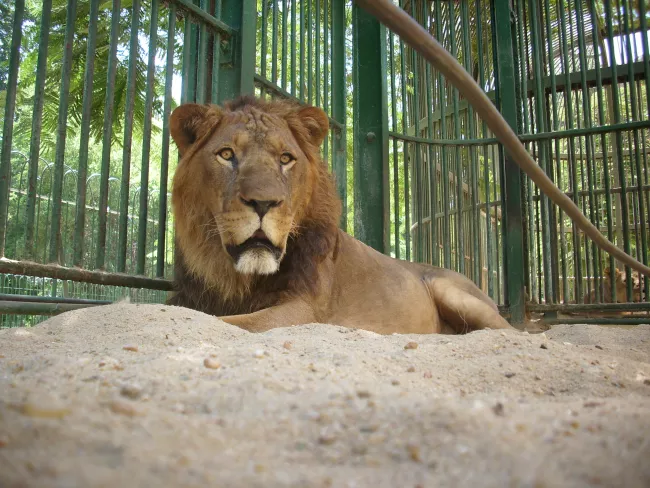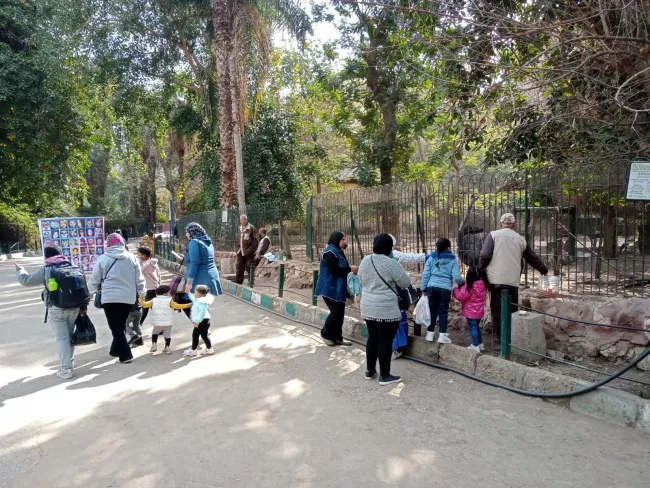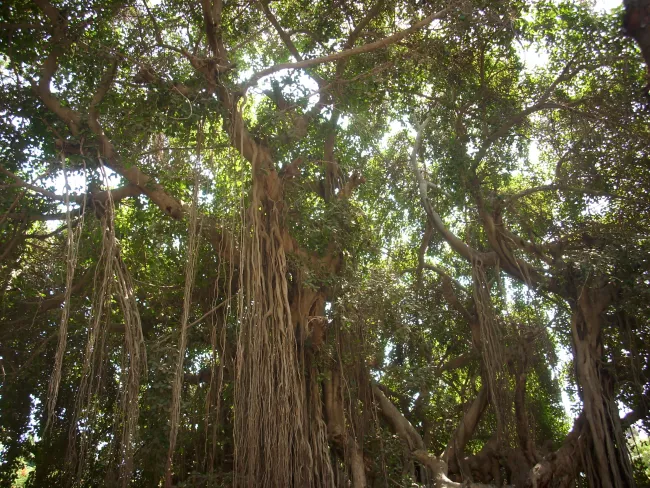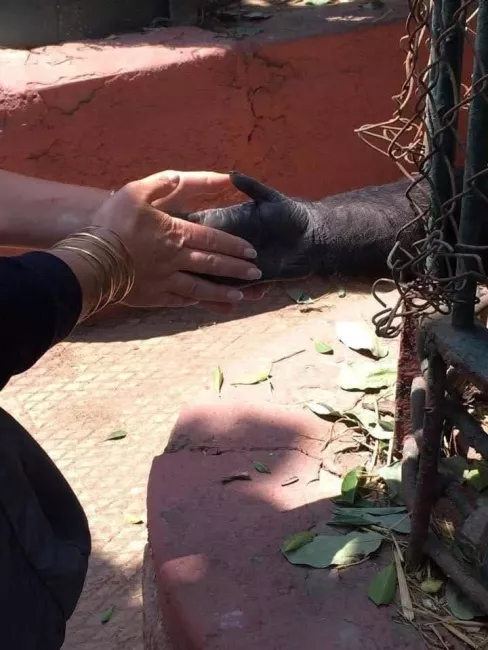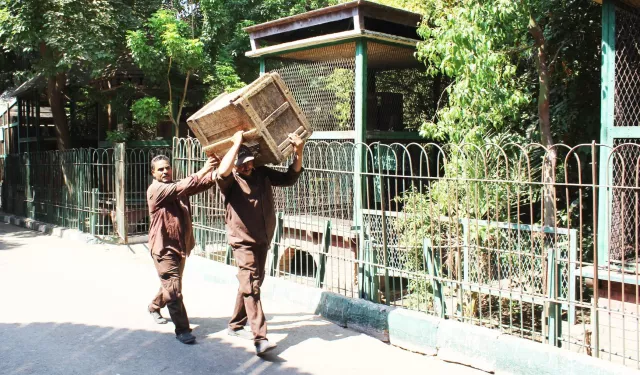
Inside Giza Zoo: Skinned hides, incinerated carcasses, and unanswered questions
“Charred animals’ remains smoldering in the incinerator. Flayed skins stored in freezer units.”
This is not a horror film. No cinematic villain enacts sadistic fantasies on animals. These are real scenes recorded by an internal committee investigating conditions inside Giza Zoo. According to a senior official who spoke to Al Manassa, the committee filed a formal report documenting what it found: carcasses dumped into the zoo’s incinerator, and animal skins preserved in industrial freezers.
As Egyptians await the reopening of the historic zoo, which has been closed since July 2023 for extensive renovations, social media posts have circulated about the deaths and killings of animals inside its grounds, and the alleged burning of their bodies. These reports prompted a statement from the public prosecutor and were soon followed by the dismissal of the zoo’s director and appointment of a new one.
Renovation at the animals’ expense
The story first gained traction when animal rights-focused social media accounts reported that the “foreign investor” managing the zoo had disposed of several lions and tigers. Activists estimated that 16 lions and six tigers were disposed of, while other animals reportedly died during renovation due to heavy machinery and ongoing construction.
Dina Zulfikar, a prominent animal welfare advocate, told Al Manassa that sources inside the zoo confirmed ongoing incinerations of animal remains.
“From the moment renovations began, the incinerator has been operating non-stop for lions, tigers, and other animals,” she said.
Zulfikar connected the animal deaths to the redevelopment plans, claiming the zoo no longer hosts the same number or diversity of animals it once did. She cited an expert in zoo management who resigned from the renovation consortium in March 2024. That person, she said, had personally witnessed a chimpanzee die of cardiac arrest after bulldozers entered its enclosure.
Al Manassa reached out to a senior official at Giza Zoo, who confirmed the account of the chimpanzee’s death. Another source from Hadayieq, the private company currently managing the zoo, also confirmed that animals had been euthanized and that their carcasses were subsequently incinerated.
Presidential directive, optimistic promises
To understand how the zoo reached this point, we must go back to August 2021. President Abdel Fattah El-Sisi directed the Ministry of Agriculture to upgrade the state-owned parks and gardens under its authority in Greater Cairo, including Giza Zoo and Orman Botanical Garden. The goal, as stated, was to modernize these assets through partnerships with experienced international firms and to bring them in line with global standards.
In November of that year, PM Mostafa Madbouly reviewed initial proposals to transform Giza Zoo into a regional model for zoological gardens. Plans emphasized improving habitats, introducing modern veterinary facilities, and building new pathways, dining areas, and even a hotel.
In an October 2022 speech, El-Sisi pointed to Giza Zoo as a symbol of the country’s deteriorating infrastructure. “If you want to see what Egypt looks like, go visit the zoo. Look at the decay, the broken buildings, the dysfunction,” he said.
By March 2023, Minister of Military Production Mohamed Salah Eddin Mostafa convened with representatives of the development consortium to discuss a preliminary blueprint for overhauling both Giza and Orman gardens.
A strong alliance
The consortium responsible for redeveloping Giza and Orman Gardens includes three Egyptian firms led by the National Authority for Military Production, along with Abnaa Sinai Construction and Hadayieq. The latter is chaired by Mohamed Kamel, the former CEO of Estadat Holding, a subsidiary of the United Media Services Company that manages state-owned sports facilities.
Two foreign companies were also brought in for the initial phase of the 25-year usufruct agreement, under which the zoo’s operations will be managed. Bernard Harrison and Friends was tasked with designing new animal housing and architectural features, while Worldwide Zoo is handling staff training, animal care protocols, and park operations.
The initial planning documents stressed the importance of preserving the zoo’s over 5,000 trees and safeguarding its historic botanical collection. In September 2023, Prime Minister Madbouly held another meeting to review the latest masterplan. It proposed expanding the number of animal species from 71 to 186 and increasing visitor zones from three to 14.
Design priorities also included maintaining and improving the health of the existing trees, creating more pathways and water features, and upgrading animal enclosures. Later that month, the Cabinet approved the final blueprint for redeveloping both Giza Zoo and Orman Garden.
Renovation began soon after, and the zoo was officially closed to the public. One of the central infrastructure projects was a tunnel known as the Nahda Tunnel, intended to connect the two gardens. The construction caused multiple delays in the zoo’s reopening.
As months passed, heaps of sand piled up inside the park while the number of animals visibly declined.
Neglect, or premeditation?
After the Ministry of Military Production handed off responsibility to Hadayieq, Mohamed Kamel brought in two additional firms—one specializing in animal handling and the other in architectural planning.
Zulfikar told Al Manassa that activists had raised concerns as early as three years ago about how the animals would be affected by the renovation. “We warned Mohamed Kamel that no construction or excavation should take place while animals were still inside,” she said. “He assured us they had contracted a specialist firm for that.”
But within months, zoo staff—veterinarians and caretakers who had long tended the animals—were replaced with foreign workers.
“I knew many of them personally,” Zulfikar said. “They were heartbroken to leave a place where they had worked for years.”
The sudden replacement, she said, worsened the situation. “The animals were familiar with the Egyptian staff. They’re frightened by heavy machinery. That fear, and the lack of familiar handlers, contributed to many deaths.”
One such case was the chimpanzee, she added, that suffered a fatal heart attack during excavation.
A paper trail
In March 2022, Maged El-Serty, the CEO of the National Military Production Company for Projects, Engineering Consultations and General Supplies, announced partnerships with international firms—including one affiliated with London Zoo—to source new animals for Giza Zoo.
But while these deals were underway behind closed doors, reports emerged of animals being killed and incinerated. Zulfikar told Al Manassa that her sources inside the zoo had confirmed not only the incineration of carcasses, but also the preservation of their skins in freezers. “Those hides are being sold at high prices,” she said.
On Saturday, August 16, Zulfikar formally reached out to government officials, seeking answers. She contacted acting head of the Central Administration for Zoos, Gamal Abdelwahid, who denied knowledge of the situation but promised to look into it.
Later that day, around 4 pm, Zulfikar and her colleagues spoke with Mohamed El-Qersh, an assistant to the minister at the Ministry of Agriculture. He formed a fact-finding committee that included Abdelwahid, the head of the Central Administration for Public Health, Slaughterhouses, and Hides, and a number of veterinarians from the General Authority for Veterinary Services.
Though Zulfikar wasn’t permitted to accompany the team as she was told she lacked official inspection credentials, the veteran animal rights activist continued to follow up until the committee received clearance from the minister’s office and entered the zoo.
Missing lions and tigers
Inside, the committee confirmed the disappearance of the lions and tigers. When Dina Zulfikar asked what had happened to them, she was told, “The zoo’s foreign management is responsible for them. Anyone seeking information about the animals’ fate should direct their questions to them.”
This statement was echoed by Gamal Abdelwahid, the acting head of the Central Administration for Zoos, who confirmed the response in comments to Al Manassa. Abdelwahid abruptly left his position a day before this article was published in Arabic.
Zulfikar, continuing to follow the committee’s work, said its members decided to contact Hamed Al-Aqnas, head of the General Authority for Veterinary Services, who ordered a full inspection of the zoo’s freezer units. That inspection led to the discovery of animal remains discarded in the incinerator and skins stored in cold storage. Abdelwahid confirmed to Al Manassa that the committee immediately filed an official incident report to initiate an investigation into what had occurred.
A letter obtained by Al Manassa, dated July 20 and issued by the Military Production Company overseeing the redevelopment, was addressed to the General Authority for Veterinary Services. It included a list of animals slated for transfer to regional zoos—but did not mention lions or tigers. The letter stated that the Central Administration for Zoos would determine the destination zoos and the exact species and numbers to be relocated. Yet the very animals reportedly killed—whose skins and remains were later found—were excluded from the list.
According to Zulfikar, the current foreign operator has legal authority to manage the animals under the redevelopment contract. That agreement states that ownership of the animals temporarily transfers to the investor, with the condition that either the animals themselves or their equivalent financial value be returned to the Egyptian state after 25 years.
In response to the omissions and findings, Lobna Mohamed Rashad, head trustee of the Animal Welfare Foundation, filed a formal complaint. Al Manassa obtained a copy of the complaint, which names the head of the Central Administration for Zoos in Giza, the deputy minister, the director of Giza’s Veterinary Directorate, and the chairman of Hill International, the firm executing the redevelopment.
The complaint cites social media reports and digital news posts alleging that 16 lions and six tigers were killed inside the zoo. It asserts that the mass killing of these animals lacked legal justification and violated Article 45 of Egypt’s constitution, Articles 355 and 357 of the Penal Code, and Article 28 of Environmental Law No. 4 of 1994.
Killing is not cruelty?
Gamal Abdelwahid insisted that the project was intended to protect and expand the zoo’s animal population—not to kill or burn them under any pretense. But a Hadayieq official, speaking to Al Manassa on condition of anonymity, did not deny that animals were euthanized. Instead, he justified the incinerations.
“We burned them because they were either too old or suffering from serious diseases,” he said. “Some illnesses, like fever or influenza, can spread quickly. Euthanasia was necessary to protect the rest.”
He continued, “We don’t consider this a crime. It’s humane euthanasia. The incinerator is licensed, and we have official approval to burn any animal that poses a threat to the zoo or the public.”
To address public concerns, the Cabinet’s Information and Decision Support Center released a video featuring international consultants involved in the zoo’s redevelopment. In it, veterinarian Pedro Andrés explained that global standards require decisive action when an animal has an incurable disease.
“Euthanizing an animal in such cases is not cruelty,” he said. “It’s a way to protect the public and our animal population”
But Zulfikar challenged the scientific basis of these euthanasia decisions. On Facebook, she wrote: “The video claims the animals were put down because they tested positive for viruses. That’s misleading. A positive result can simply mean the animal received a vaccine—not that it was actually sick.”
Omar Tamam, a professor of natural reserves and expert on carnivorous mammals, echoed her concern. “It’s not scientifically valid to test healthy, vaccinated animals,” he said. “Those tests will show positive. Tests should only be run on animals actively undergoing treatment. This is something every Egyptian vet knows.”
As public outrage grew over the reported disposal of large animals, the Public Prosecution Office announced an official investigation into the claims. Soon after, Abdelwahid left his position and was replaced by army general Ibrahim Metwally.
Meanwhile, MP Ehab Mansour, head of the Egyptian Social Democratic Party’s parliamentary bloc, submitted a formal inquiry. “What procedures were followed in handling the zoo’s animals, especially given that the facility houses around 5,000 animals?” he asked.
Speaking to Al Manassa, Mansour said he had not yet received an answer. He added that more parliamentary questions could follow if no clarity is provided.
It appears that the story of Giza Zoo’s redevelopment is still unfolding. Founded in 1891, the zoo’s transformation, and the fate of its animals, may remain unclear until the gates reopen. And that, too, seems far off.
